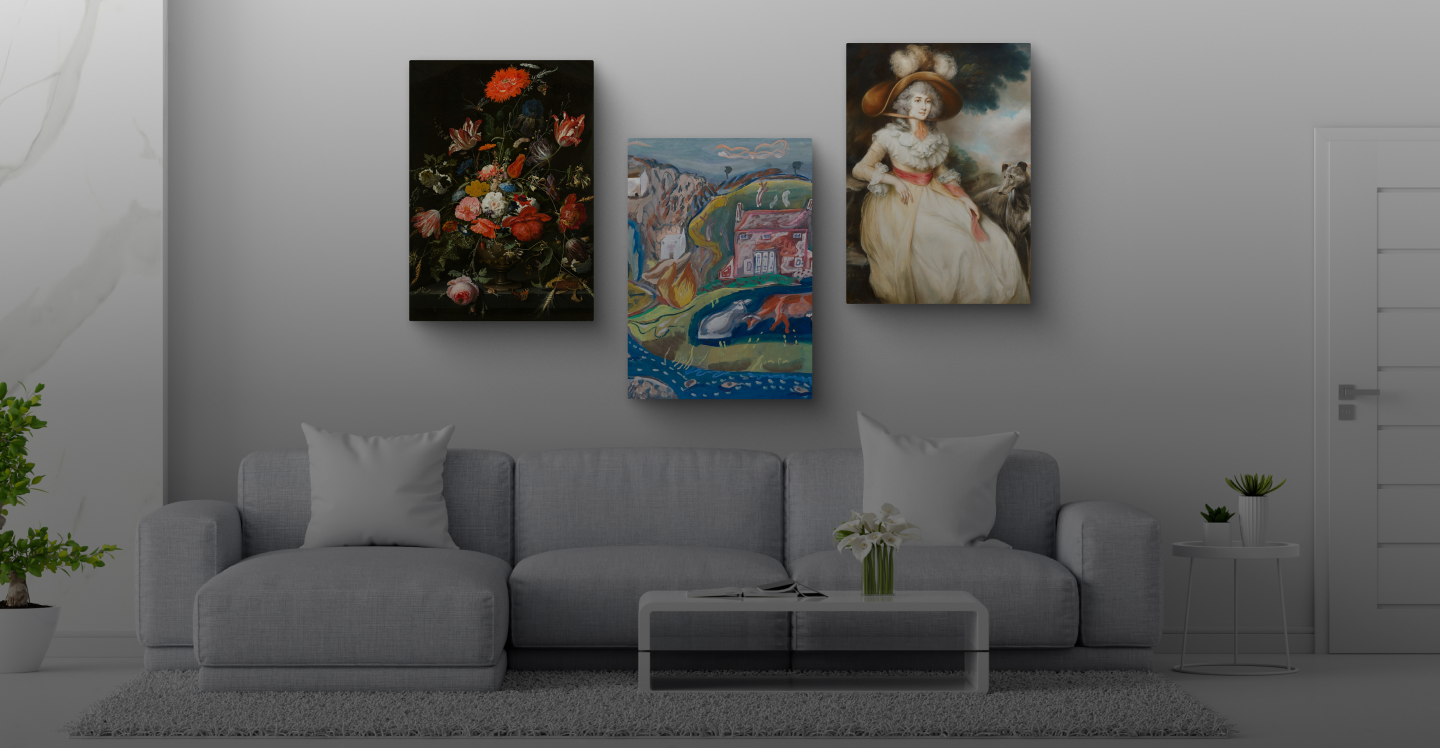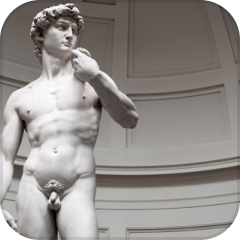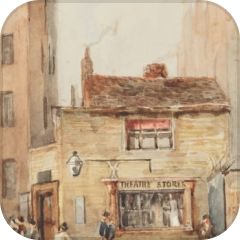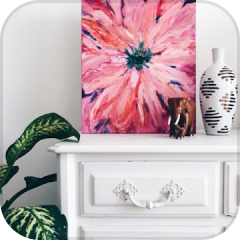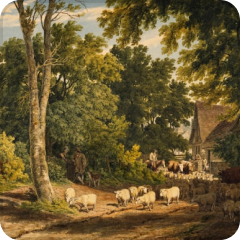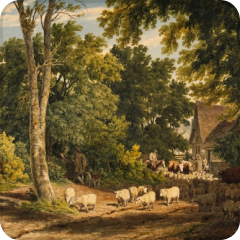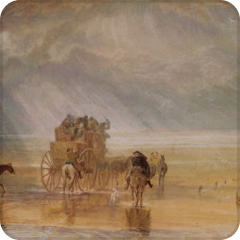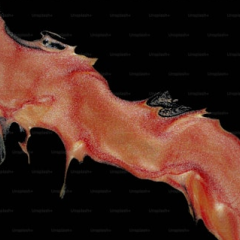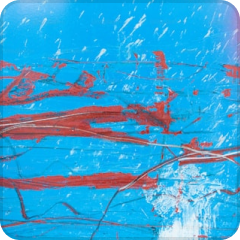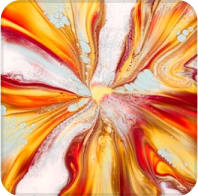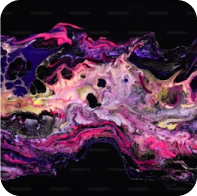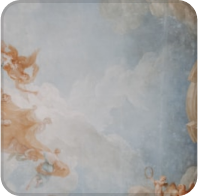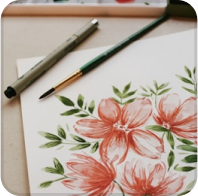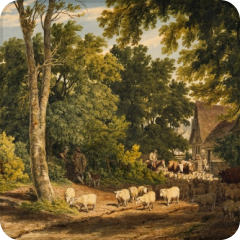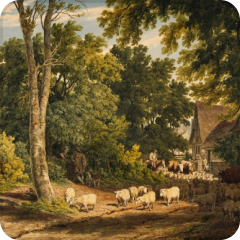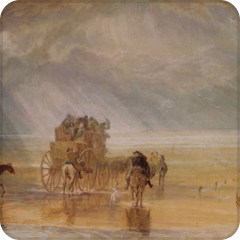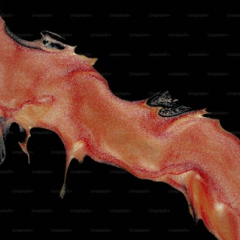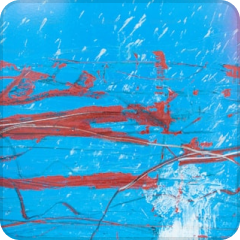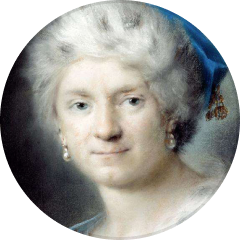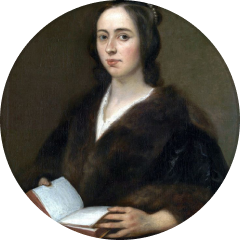





Top Categories
Transform Your Space with Personalized Art Prints
Bring your walls to life with premium, customizable canvas prints. Whether it’s your favorite memories or inspiring art, Zebaco makes it easy to create beautiful, durable pieces that reflect your style.

High-Quality Prints

Affordable Custom Art

100% Satisfaction
What’s On Sale
What Our Customers are Saying


Oliver Stone
"I recently purchased a stunning canvas from Zebaco, and I couldn't be happier with my choice! The vibrant colors and exquisite detail have truly transformed my living room. “


Amelia Rivers
"I recently purchased a stunning canvas from Zebaco, and I couldn't be happier with my choice! The vibrant colors and exquisite detail have truly transformed my living room. “


Ethan Hawke
"I recently purchased a stunning canvas from Zebaco, and I couldn't be happier with my choice! The vibrant colors and exquisite detail have truly transformed my living room. “


Sophia Bennett
"I recently purchased a stunning canvas from Zebaco, and I couldn't be happier with my choice! The vibrant colors and exquisite detail have truly transformed my living room. “


Sophia Bennett
"I recently purchased a stunning canvas from Zebaco, and I couldn't be happier with my choice! The vibrant colors and exquisite detail have truly transformed my living room. “
Unleashing Creativity: A Guide to Creating Canvas Prints
Discover the art of elevating your living space with stunning canvas prints. This comprehensive guide will take you through the step-by-step process of unleashing your creativity and transforming ordinary images into extraordinary wall art. From selecting the perfect materials to exploring various printing methods, we've got you covered. Get ready to add a touch of elegance and showcase your inner artist while creating personalized décor that reflects your unique style and personality.
Canvas printing has revolutionized the way we display cherished memories, artistic expressions, and visual narratives within our homes and offices. This transformative medium bridges the gap between traditional photography and fine art, offering endless possibilities for creative expression. Whether you're a seasoned artist, passionate photographer, or someone seeking to personalize your living environment, canvas prints provide an accessible pathway to creating museum-quality artwork that captivates viewers and sparks meaningful conversations.
The journey of creating exceptional canvas prints involves numerous considerations, from understanding color theory and composition principles to selecting appropriate substrates and printing methodologies. Each decision along this creative pathway influences the final outcome, determining whether your artwork achieves its intended impact and longevity. This comprehensive exploration will equip you with the knowledge and confidence needed to navigate every aspect of the canvas printing process, ensuring your creative vision translates seamlessly from concept to completion.
Modern canvas printing encompasses a fascinating blend of traditional craftsmanship and contemporary innovation. While the fundamental principles of creating compelling visual art remain unchanged, technological advancements have expanded our capabilities dramatically. Today's canvas prints can achieve remarkable detail, vibrant color reproduction, and exceptional durability that rivals traditional painting methods. Understanding these capabilities allows creators to push boundaries and explore new frontiers in visual storytelling.
The psychological impact of well-crafted canvas prints extends beyond mere decoration. These pieces become focal points that influence mood, spark creativity, and create emotional connections within living spaces. Research indicates that thoughtfully selected artwork can enhance productivity, reduce stress, and foster positive environments that support well-being and inspiration. By mastering the art of canvas printing, you're not simply creating decorative objects but crafting meaningful experiences that enrich daily life.
Mastering Image Selection and Preparation
The foundation of any exceptional canvas print begins with meticulous image selection and preparation. This crucial phase determines whether your finished piece will achieve its intended visual impact or fall short of expectations. Understanding the nuances of digital imaging, resolution requirements, and compositional principles ensures your canvas print will captivate viewers and stand the test of time.
High-resolution imagery forms the cornerstone of professional-quality canvas prints. Images should ideally maintain a minimum resolution of 300 dots per inch at the intended print size to ensure crisp detail and prevent pixelation. This requirement becomes increasingly critical as print dimensions expand, necessitating careful consideration of source image quality and potential upscaling limitations. When working with digital photographs, shoot in RAW format whenever possible to maximize post-processing flexibility and maintain optimal image quality throughout the editing workflow.
Color space considerations play a pivotal role in achieving accurate color reproduction during the printing process. Converting images from RGB to CMYK color space before printing helps ensure colors translate accurately from screen to canvas. However, this conversion process requires careful attention to color gamut limitations, as certain vibrant colors visible on monitors may fall outside the printable color range. Understanding these limitations allows for proactive color adjustments that maintain visual harmony while working within printing constraints.
Compositional analysis becomes paramount when preparing images for canvas printing. Consider how the image will function as a standalone piece of art rather than merely a photograph. Elements such as focal points, leading lines, color harmony, and tonal balance contribute significantly to the overall visual impact. Images with strong compositional structure translate more effectively to canvas prints, creating compelling artwork that draws viewers in and maintains their interest over time.
Post-processing workflows should emphasize enhancing the image's natural characteristics rather than introducing artificial elements that may appear jarring on canvas. Subtle adjustments to contrast, saturation, and sharpness can dramatically improve the final result without compromising authenticity. Pay particular attention to shadow and highlight detail, ensuring sufficient information exists in both areas to prevent loss of detail during the printing process.
Consider the intended viewing environment when preparing images for canvas printing. Lighting conditions, wall colors, and surrounding décor all influence how colors and tones appear in the final display. Images destined for well-lit spaces may benefit from slightly reduced contrast to prevent harshness, while pieces intended for dimmer environments might require enhanced brightness and saturation to maintain visual presence.
The emotional resonance of selected images significantly impacts the long-term satisfaction with canvas prints. Choose photographs or artwork that maintain personal significance or aesthetic appeal beyond current trends. Images that evoke positive emotions, capture meaningful moments, or represent artistic achievements tend to provide lasting enjoyment and continue appreciating in personal value over time.
Technical considerations extend beyond basic resolution and color management to encompass factors such as noise reduction, chromatic aberration correction, and lens distortion compensation. Modern image editing software provides sophisticated tools for addressing these technical challenges, but understanding when and how to apply these corrections requires experience and careful observation. Over-correction can introduce artificial characteristics that detract from the image's natural appeal.
Understanding Canvas Materials and Substrate Selection
Canvas material selection profoundly influences both the aesthetic qualities and longevity of your printed artwork. Understanding the characteristics of different canvas types, their interactions with various ink systems, and their suitability for different artistic applications empowers you to make informed decisions that align with your creative vision and practical requirements.
Cotton canvas represents the traditional choice for fine art printing, offering exceptional ink absorption, natural texture, and proven archival stability. High-quality cotton canvases undergo specialized treatments to optimize ink reception while maintaining the characteristic tooth that gives canvas prints their distinctive appearance. The fiber structure of cotton provides excellent dimensional stability, reducing the likelihood of warping or distortion over time when properly stretched and maintained.
Polyester canvas alternatives have gained popularity due to their enhanced durability and resistance to environmental factors. These synthetic substrates offer superior moisture resistance, reduced susceptibility to UV degradation, and consistent printing characteristics that eliminate many variables associated with natural fiber canvases. While polyester canvases may lack some of the traditional texture associated with cotton, they excel in applications where longevity and dimensional stability are paramount considerations.
Canvas weight measurements, typically expressed in ounces per square yard, indicate the substrate's thickness and durability characteristics. Heavier canvases generally provide better dimensional stability and enhanced texture but may require more robust stretching systems to achieve proper tension. Lighter canvases offer greater flexibility and easier handling but may be more susceptible to damage during installation and long-term display.
Surface treatments applied to canvas substrates significantly influence ink absorption, color saturation, and texture characteristics. Properly treated canvases feature specialized coatings that optimize ink reception while preserving the natural canvas texture. These treatments must balance ink absorption with preventing oversaturation that could lead to bleeding or color shifts during the printing process.
Acid-free canvas materials ensure long-term stability and prevent yellowing or deterioration that can compromise artwork over decades. The pH neutrality of these substrates prevents chemical reactions that could alter colors or weaken the canvas structure over time. When investing in canvas prints intended for long-term display, prioritizing acid-free materials represents a crucial decision that protects your investment and preserves artistic integrity.
Texture variations among canvas types create different visual and tactile experiences that complement various artistic styles. Fine-weave canvases suit detailed photographs and realistic artwork where subtle textures enhance rather than compete with image content. Coarse-weave canvases excel with bold, painterly images where pronounced texture adds artistic character and visual interest.
Canvas thickness affects both the printing process and final presentation characteristics. Thicker canvases provide enhanced durability and create impressive visual depth when gallery-wrapped, while thinner options offer greater flexibility for alternative mounting methods. Consider the intended display method and handling requirements when selecting canvas thickness to ensure optimal results.
Specialty canvas options include textured variants that simulate various artistic media, from watercolor paper to oil painting surfaces. These specialized substrates allow creators to achieve specific aesthetic effects that complement particular artistic styles or subject matter. However, specialty canvases may require modified printing parameters and careful testing to achieve optimal results.
Color Management and Printing Specifications
Color management represents one of the most critical yet frequently misunderstood aspects of professional canvas printing. Achieving accurate color reproduction requires a systematic approach that encompasses monitor calibration, color profile management, and understanding the interactions between different printing systems and substrates. Mastering these elements ensures your canvas prints accurately reflect your creative intentions while maintaining consistency across multiple prints.
Monitor calibration forms the foundation of effective color management workflows. Without properly calibrated displays, creators cannot accurately assess how colors will appear in print, leading to disappointing results and frustrating trial-and-error cycles. Professional colorimeters provide precise calibration capabilities that establish known color standards, ensuring what you see on screen closely matches printed output. Regular calibration maintains accuracy as monitors age and environmental conditions change.
Color profiles serve as translation tools that communicate color information between different devices and processes within the printing workflow. Understanding ICC profiles and their proper implementation allows for predictable color management from capture through final output. Working within standardized color spaces such as Adobe RGB or ProPhoto RGB provides expanded color gamuts that better preserve color information throughout the editing and printing process.
Soft proofing capabilities in modern image editing software enable accurate preview of how images will appear when printed on specific canvas and ink combinations. This powerful feature allows creators to make targeted adjustments before printing, reducing waste and improving final results. Effective soft proofing requires accurate printer profiles and proper viewing conditions to provide reliable previews of printed output.
Ink selection significantly impacts color reproduction, longevity, and overall print quality. Pigment-based inks generally offer superior lightfastness and archival stability compared to dye-based alternatives, making them the preferred choice for fine art applications. However, different ink formulations excel in various applications, and understanding these characteristics helps optimize results for specific requirements.
Color gamut limitations inherent in printing processes require strategic approaches to color management. While modern printing systems achieve impressive color reproduction, certain highly saturated colors visible on monitors cannot be accurately reproduced in print. Understanding these limitations and developing techniques for graceful color compression ensures final prints maintain visual harmony even when exact color matching proves impossible.
Print resolution considerations extend beyond simple pixel counts to encompass viewing distance, image content, and substrate characteristics. While 300 DPI represents a common standard for photographic prints, canvas printing may benefit from different resolution approaches depending on viewing distance and image characteristics. Understanding these relationships allows for optimized file preparation that balances quality with practical considerations.
Environmental factors influence color perception and print longevity in ways that informed creators must consider. Lighting conditions dramatically affect how colors appear, while humidity and temperature variations impact both the printing process and long-term stability. Accounting for these environmental factors during both printing and display planning ensures optimal results and longevity.
Quality control measures throughout the color management process help identify and correct issues before they impact final results. Regular printer maintenance, consistent substrate handling, and systematic testing protocols maintain reliable output quality. Developing standardized workflows reduces variables and increases the likelihood of achieving consistent, high-quality results across multiple printing sessions.
Professional Printing Methods and Equipment
Contemporary canvas printing encompasses a diverse array of printing methods, each offering unique advantages and characteristics suited to different artistic applications and quality requirements. Understanding these various approaches enables informed decision-making that aligns printing methodology with creative objectives while optimizing results within budget constraints and timeline considerations.
Inkjet printing dominates the canvas printing landscape due to its versatility, color accuracy, and ability to handle various substrate types effectively. Professional-grade inkjet systems utilize sophisticated ink delivery mechanisms that precisely control droplet size and placement, enabling smooth gradations and exceptional detail reproduction. These systems often employ multiple ink colors beyond the basic CMYK configuration, incorporating additional hues that expand color gamut and improve color accuracy in challenging areas such as skin tones and neutral grays.
Large-format printing capabilities have revolutionized canvas printing by enabling artwork creation at virtually any scale. These impressive systems can accommodate canvases measuring several feet in multiple dimensions while maintaining consistent quality across the entire print surface. Understanding the capabilities and limitations of large-format equipment helps creators plan appropriately scaled artwork that maximizes visual impact while working within technical constraints.
Print head technology continues evolving, with manufacturers developing increasingly sophisticated systems that deliver finer droplet control and improved reliability. Understanding how different print head technologies affect output quality helps creators select appropriate printing services and set realistic expectations for their projects. Some print heads excel at fine detail reproduction, while others prioritize speed and efficiency for larger format work.
Ink delivery systems vary significantly among different printing platforms, influencing both color reproduction and operational costs. Bulk ink systems reduce per-print costs for high-volume production while maintaining consistent color output, while cartridge-based systems offer convenience and simplified maintenance for smaller operations. Understanding these trade-offs helps creators select printing services that align with their volume requirements and budget considerations.
Drying and curing processes affect both the immediate handling characteristics and long-term stability of canvas prints. Different ink formulations require varying drying times and environmental conditions to achieve optimal results. Understanding these requirements helps creators plan project timelines appropriately and ensures proper handling that prevents damage to freshly printed canvases.
Quality control protocols employed by professional printing services significantly impact final results consistency and reliability. Reputable providers implement comprehensive testing procedures that monitor color accuracy, print uniformity, and substrate adhesion throughout production runs. Understanding these quality measures helps creators evaluate potential printing partners and set appropriate expectations for their projects.
Post-printing treatments may enhance durability and visual characteristics of canvas prints depending on intended applications and environmental exposure. Protective coatings can improve resistance to UV degradation, moisture damage, and surface contamination while potentially altering surface texture and reflectivity characteristics. Evaluating the necessity and appropriateness of these treatments requires consideration of display environment and longevity requirements.
Creative Design Principles and Composition
Effective canvas print design transcends technical execution to encompass fundamental artistic principles that govern visual communication and aesthetic appeal. Understanding these principles enables creators to develop compelling compositions that engage viewers emotionally while demonstrating sophisticated artistic sensibility. Mastering design fundamentals transforms ordinary images into extraordinary artwork that commands attention and appreciation.
Balance represents a fundamental design principle that determines how visual elements interact within the composition to create harmony or intentional tension. Symmetrical balance creates formal, stable compositions suitable for traditional subjects and classical aesthetic approaches. Asymmetrical balance relies on visual weight distribution through color, texture, and form to create dynamic compositions that maintain equilibrium while generating visual interest and movement.
Color harmony principles guide the selection and arrangement of hues within compositions to achieve desired emotional responses and aesthetic effects. Complementary color schemes create vibrant, high-contrast compositions that command attention and convey energy. Analogous color relationships produce harmonious, soothing compositions that promote contemplation and create serene environments. Understanding color psychology enables creators to manipulate viewer emotions and create targeted atmospheric effects within their artwork.
Focal point establishment directs viewer attention and creates visual hierarchy within compositions. Effective focal points emerge through strategic use of contrast, color saturation, positioning, and scale relationships. Multiple focal points can create complex visual narratives, but require careful orchestration to prevent confusion or visual chaos. Understanding how viewers scan artwork enables strategic placement of key elements that guide visual exploration and enhance storytelling effectiveness.
Leading lines function as invisible pathways that direct viewer attention throughout compositions while creating depth and movement. Diagonal lines generate energy and dynamism, while horizontal lines promote stability and tranquility. Curved lines introduce organic movement and grace, while vertical lines convey strength and formality. Mastering line usage enables creators to control visual flow and create sophisticated compositions that maintain viewer engagement.
Texture considerations become particularly important in canvas printing due to the substrate's inherent tactile qualities. Images with strong textural elements often benefit from canvas presentation, as the substrate texture complements and enhances the visual texture within the image. Conversely, images relying on smooth gradations or fine detail may require careful substrate selection to prevent texture interference with image content.
Scale relationships within compositions determine the relative importance and visual impact of different elements. Dramatic scale variations create compelling focal points and establish clear visual hierarchies, while similar scales produce more subtle, harmonious relationships. Understanding scale psychology helps creators manipulate viewer perception and create desired emotional responses through strategic element sizing and positioning.
Negative space utilization represents an often overlooked but critically important design element that affects composition clarity and visual impact. Effective negative space usage provides visual breathing room that prevents compositions from appearing cluttered while emphasizing positive elements through contrast. Strategic negative space placement can guide viewer attention, create implied movement, and establish sophisticated compositional relationships that elevate artistic quality.
Finishing Options and Presentation Styles
Canvas print finishing transforms raw printed substrates into polished artwork ready for display and appreciation. Understanding various finishing options and their aesthetic implications enables creators to select presentation styles that complement their artistic vision while meeting practical display requirements. These decisions significantly influence the perceived quality and professional appearance of finished pieces.
Gallery wrapping represents the most popular finishing method for canvas prints, creating clean, contemporary presentations that eliminate the need for traditional framing. This approach stretches the canvas around wooden stretcher bars, allowing the image to extend around the edges for a seamless, three-dimensional appearance. Gallery wrapping suits modern interiors and minimalist aesthetic preferences while providing cost-effective finishing that emphasizes the artwork itself rather than decorative framing elements.
Mirror wrapping offers an alternative edge treatment that reflects border pixels outward to create seamless edge transitions. This approach works particularly well with images featuring prominent border elements or patterns that benefit from continuation around canvas edges. Mirror wrapping requires careful consideration of image content near borders to ensure reflected elements create pleasing rather than distracting visual effects.
Border extensions provide another finishing option that adds solid colors or gradient transitions around image perimeters. This approach allows images to maintain their original proportions while accommodating gallery wrapping requirements. Creative border treatments can complement image content while providing visual breathing room that enhances overall composition effectiveness.
Traditional framing remains relevant for canvas prints requiring formal presentation or protection from environmental factors. Floating frames create sophisticated presentations that showcase both the canvas texture and image content while providing subtle definition that separates artwork from surrounding wall surfaces. Shadow box framing adds dimensional depth that emphasizes the canvas's three-dimensional characteristics while protecting the surface from contact damage.
Mounting alternatives such as standoff systems or cleat hanging mechanisms offer contemporary presentation methods that create dramatic shadow effects and emphasize the canvas's dimensional qualities. These systems work particularly well in modern architectural settings where clean lines and minimal visual disruption are priorities. Understanding various mounting options enables creators to select systems that optimize display effectiveness while meeting practical installation requirements.
Edge finishing details significantly impact the perceived quality and professionalism of canvas prints. Clean, properly secured edges indicate attention to detail and craftsmanship quality, while sloppy or unfinished edges detract from overall presentation effectiveness. Professional finishing includes proper corner construction, secure staple placement, and protective backing materials that ensure long-term stability and appearance retention.
Protective treatments may enhance canvas print longevity and maintain appearance quality in challenging display environments. UV-resistant coatings provide protection against light-induced fading while potentially altering surface reflectivity characteristics. Anti-static treatments reduce dust accumulation, while moisture-resistant coatings protect against humidity-related damage. Evaluating the necessity and appropriateness of protective treatments requires careful consideration of display environment and maintenance capabilities.
Size Planning and Spatial Considerations
Determining optimal canvas print dimensions requires careful analysis of display space characteristics, viewing distances, and intended visual impact. Size selection significantly influences both the artwork's presence within its environment and the technical requirements for successful printing and installation. Understanding these relationships enables creators to develop sizing strategies that maximize visual effectiveness while working within practical constraints.
Viewing distance calculations help determine appropriate image resolution and detail levels for specific display scenarios. Artwork intended for close examination requires higher resolution and finer detail preservation than pieces designed for distant viewing. Understanding these relationships prevents over-processing small details that won't be visible at typical viewing distances while ensuring adequate resolution for intended display conditions.
Room proportion analysis ensures canvas prints complement rather than overwhelm their display environments. Artwork should maintain appropriate scale relationships with surrounding furniture, architectural elements, and other decorative features. Oversized prints can dominate small spaces, while undersized pieces may appear lost in expansive environments. Developing sensitivity to these spatial relationships improves overall design effectiveness and creates harmonious interior compositions.
Wall space evaluation encompasses more than simple dimensional measurements to include factors such as ceiling height, furniture placement, lighting conditions, and traffic patterns. Understanding how these elements interact helps identify optimal placement locations and sizing parameters that maximize visual impact while maintaining practical accessibility and safety considerations.
Multiple print arrangements offer opportunities to create compelling visual narratives and fill larger wall spaces effectively. Triptych configurations divide single images across three panels, creating dramatic presentations that emphasize horizontal movement and scale. Grid arrangements enable storytelling through sequential imagery while providing flexibility in individual panel sizing and spacing. Understanding arrangement principles helps creators develop cohesive presentations that enhance rather than compete with individual image content.
Scaling considerations for image enlargement require understanding resolution limitations and interpolation capabilities. While modern algorithms can achieve impressive enlargement results, understanding their limitations prevents disappointment and helps establish realistic size expectations. Some images benefit from strategic cropping that eliminates problematic areas while enabling larger print sizes from available resolution.
Aspect ratio preservation becomes critical when adapting images to specific canvas sizes or proportions. Maintaining original aspect ratios preserves compositional integrity and prevents distortion that can dramatically alter artistic intent. When aspect ratio modifications are necessary, creative cropping or border addition strategies can accommodate size requirements while preserving essential compositional elements.
Installation planning considerations include wall strength requirements, hanging systems, and potential future relocation needs. Large canvas prints require robust hanging systems that distribute weight effectively while providing secure attachment to wall structures. Understanding installation requirements during the planning phase prevents complications and ensures safe, stable display of finished artwork.
Environmental Factors and Longevity
Environmental conditions significantly impact both the printing process quality and long-term stability of canvas prints. Understanding these factors enables creators to make informed decisions about materials, printing processes, and display conditions that optimize both immediate results and extended lifespan. Proactive environmental consideration protects artistic investments and ensures continued enjoyment for years or decades.
Temperature and humidity control during printing directly affects ink behavior, substrate handling characteristics, and final print quality. Optimal printing environments maintain stable temperature and humidity levels that prevent substrate expansion or contraction during printing while ensuring consistent ink flow and absorption. Understanding these requirements helps creators select printing services that maintain proper environmental controls and schedule printing during optimal conditions.
UV exposure represents one of the most significant threats to canvas print longevity, causing gradual color fading and substrate degradation over time. Understanding UV protection strategies enables creators to select appropriate materials and display locations that minimize exposure while maintaining optimal viewing conditions. Strategic placement away from direct sunlight, combined with UV-resistant inks and protective treatments, dramatically extends canvas print lifespan.
Humidity fluctuations cause canvas substrates to expand and contract, potentially leading to dimensional instability, warping, or cracking over time. Understanding these effects enables creators to select appropriate substrates and stretching methods that accommodate environmental variations while maintaining structural integrity. Proper stretching tension provides flexibility for natural substrate movement without compromising visual presentation.
Air quality factors including dust, pollutants, and airborne particles affect canvas print appearance and longevity. Understanding these environmental challenges enables proactive protection strategies such as strategic placement, regular cleaning protocols, and protective barriers when necessary. Clean environments significantly extend canvas print lifespan while maintaining optimal visual presentation.
Temperature cycling effects on canvas prints encompass both immediate handling considerations and long-term stability factors. Extreme temperature variations can cause rapid substrate expansion or contraction that stresses stretched canvases and may lead to structural damage. Understanding these effects helps identify appropriate display locations and storage conditions that protect artwork investments.
Lighting considerations extend beyond UV protection to encompass color temperature, intensity, and heat generation factors. Different lighting types alter color perception and may generate heat that affects canvas stability over time. Understanding optimal lighting strategies enhances artwork presentation while protecting against environmental damage that could compromise longevity.
Storage requirements for canvas prints before and after installation require consideration of environmental factors that could cause damage during handling or temporary storage periods. Proper storage conditions prevent moisture damage, dust accumulation, and physical damage that could compromise final presentation quality. Understanding storage best practices ensures artwork remains in optimal condition throughout the entire process from printing to final installation.
Professional Display and Installation
Professional installation and display of canvas prints requires understanding both aesthetic principles and practical considerations that ensure optimal presentation while protecting artwork investments. Proper installation maximizes visual impact while providing secure, stable mounting that withstands environmental factors and normal handling. Mastering installation principles enables creators to present their work professionally while avoiding common pitfalls that compromise final results.
Wall preparation significantly influences installation success and long-term stability. Understanding wall composition, structural capabilities, and surface conditions helps identify appropriate mounting strategies and hardware requirements. Different wall types require specific mounting approaches that provide adequate support while preventing damage to both the artwork and wall surface.
Hanging hardware selection encompasses numerous options ranging from simple picture wire systems to sophisticated rail mounting mechanisms. Understanding the advantages and limitations of different hanging systems enables selection of appropriate hardware that balances security, adjustability, and aesthetic considerations. Professional hanging systems often provide superior weight distribution and adjustment capabilities that enhance both safety and presentation flexibility.
Strategic Height Positioning for Visual Excellence
The science of optimal canvas print positioning transcends simple measurement guidelines, encompassing sophisticated understanding of human visual perception, architectural dynamics, and environmental psychology. Professional interior designers recognize that precise height placement fundamentally transforms how artwork communicates with viewers, creating either harmonious visual dialogue or uncomfortable tension within living spaces.
Viewing angle mathematics reveals that optimal canvas placement occurs when the center point aligns with average eye level, typically positioned between fifty-seven and sixty inches from floor level. However, this baseline measurement represents merely the foundation for more nuanced placement decisions. Room dimensions, ceiling heights, furniture configurations, and traffic flow patterns demand careful consideration to achieve truly exceptional presentation results.
Ergonomic research demonstrates that comfortable viewing occurs when viewers can observe artwork without straining neck muscles or adjusting posture significantly. Canvas prints positioned too high force uncomfortable upward gazing, while excessively low placement creates awkward downward viewing angles. The sweet spot emerges when natural standing posture allows effortless appreciation of artistic details and compositional elements.
Furniture relationships profoundly influence optimal canvas height selection. Sofas, chairs, dining tables, and console furniture create visual anchor points that must harmonize with artwork placement. Canvas prints hung above seating areas require different height considerations than those positioned in hallways or open wall spaces. The visual weight distribution between furniture and artwork creates compositional balance that either enhances or undermines overall room aesthetics.
Architectural features including crown molding, chair rails, wainscoting, and ceiling configurations establish visual guidelines that inform intelligent placement decisions. Canvas prints should acknowledge these existing architectural elements while maintaining independence from restrictive adherence to structural lines. Skilled placement creates visual conversations between artwork and architectural details without sacrificing artistic impact or compositional integrity.
Traffic pattern analysis reveals how human movement through spaces affects artwork perception. Hallway placements require different height considerations than static viewing areas, as moving observers experience changing perspective relationships. Canvas prints in high-traffic areas benefit from slightly elevated positioning to accommodate varied viewing angles created by human movement patterns throughout the space.
Multiple canvas arrangements demand sophisticated height coordination to maintain visual unity while accommodating individual piece requirements. Groupings create composite visual statements that require careful height staggering to prevent monotonous alignment while preserving overall compositional harmony. The interplay between individual canvas heights and collective presentation creates dynamic visual rhythms that engage viewers through subtle variation within unified themes.
Professional curators employ mathematical relationships when determining optimal height placement for complex canvas arrangements. Golden ratio principles, rule of thirds guidelines, and proportional harmony theories provide frameworks for creating visually compelling presentations that feel naturally balanced. These mathematical foundations support intuitive aesthetic decisions while ensuring consistent excellence across diverse display scenarios.
Illumination Strategies for Canvas Enhancement
Sophisticated lighting design elevates canvas prints from mere wall decorations to compelling artistic focal points that command attention and create atmospheric ambiance. Understanding the complex interplay between light sources, canvas materials, and environmental conditions enables creation of dramatic presentations that enhance both artistic appreciation and interior design cohesion.
Directional lighting principles govern how illumination interacts with canvas textures, revealing or concealing surface details that contribute to overall visual impact. Oblique lighting angles emphasize canvas weave patterns and paint textures, creating dimensional effects that add visual interest and artistic authenticity. Direct frontal illumination tends to flatten textural elements while eliminating shadows that provide depth perception cues essential for engaging viewing experiences.
Color temperature selection dramatically influences how canvas prints appear under artificial illumination. Warm lighting temperatures between twenty-seven hundred and three thousand Kelvin create cozy, intimate atmospheres that complement earth-toned artwork and traditional interior design schemes. Cool lighting temperatures above four thousand Kelvin provide crisp, contemporary aesthetics that enhance modern artwork while creating energetic visual environments suitable for dynamic spaces.
Intensity modulation through dimming systems enables adaptive lighting scenarios that accommodate different viewing contexts and time-of-day requirements. Canvas prints benefit from adjustable illumination that can emphasize dramatic impact during evening entertainment while providing subtle accent lighting during quiet daytime hours. Variable intensity control prevents over-illumination that causes viewer fatigue while ensuring adequate light levels for comfortable artwork appreciation.
Track lighting systems offer exceptional flexibility for canvas print illumination, enabling precise beam positioning and easy adjustment as display configurations evolve. Professional-grade track fixtures provide superior color rendering capabilities that accurately reproduce artistic colors while minimizing harmful ultraviolet radiation that causes long-term canvas degradation. Adjustable beam angles accommodate various canvas sizes and hanging heights without requiring permanent fixture modifications.
Picture lighting solutions create dedicated illumination specifically designed for artwork enhancement. These specialized fixtures mount directly above or below canvas prints, providing concentrated light pools that emphasize artistic details while minimizing environmental spillage. Professional picture lights incorporate glare-reduction features and optimal beam spreads calibrated for standard canvas proportions and viewing distances.
Ambient lighting integration ensures canvas print illumination harmonizes with overall room lighting schemes rather than creating isolated bright spots that disrupt visual flow. Successful integration requires balancing accent lighting intensities with general room illumination levels to maintain comfortable viewing conditions while preserving artistic impact. Layered lighting approaches combine multiple light sources to create sophisticated illumination environments that enhance both artwork and architectural features.
Natural light considerations affect canvas placement decisions, as window proximity influences both viewing conditions and long-term preservation concerns. Morning and evening sun angles create dramatic lighting effects that can either enhance or overwhelm canvas presentations depending on positioning and window treatment selections. Understanding seasonal light pattern changes enables proactive placement decisions that maintain optimal viewing conditions throughout the year.
Spatial Arrangement Principles for Multiple Canvas Displays
Creating compelling multiple canvas arrangements requires understanding sophisticated visual relationship principles that govern how individual pieces interact to form cohesive artistic statements. Professional gallery experience reveals that successful groupings depend on mathematical spacing relationships, proportional harmony, and compositional balance that creates unified presentations greater than the sum of individual components.
Proportional spacing calculations determine optimal distances between multiple canvas pieces to prevent visual crowding while maintaining compositional unity. The general guideline suggests spacing distances between two and six inches for smaller canvases, expanding to eight to twelve inches for larger pieces. However, these measurements serve as starting points for more nuanced decisions based on canvas content, frame characteristics, and wall space dimensions.
Visual weight distribution principles govern how multiple canvases balance within grouped arrangements. Larger, darker, or more visually complex pieces carry greater visual weight and require careful positioning to prevent compositions from appearing unbalanced or unstable. Successful arrangements distribute visual weight through strategic placement that creates equilibrium while maintaining dynamic visual interest through controlled asymmetry.
Grid arrangement systems provide structured frameworks for organizing multiple canvas displays while accommodating various sizes and orientations. Perfect grid systems create formal, organized presentations suitable for contemporary interior design schemes. Modified grid systems introduce controlled irregularity that maintains organizational clarity while adding visual dynamism through subtle variations in alignment and spacing patterns.
Organic arrangement approaches eschew rigid geometric relationships in favor of more intuitive, flowing compositions that reflect natural grouping principles. These arrangements require heightened sensitivity to visual relationships and proportional harmony, as the absence of geometric structure demands more sophisticated understanding of compositional balance. Successful organic arrangements create visual narratives that guide viewer attention through carefully orchestrated viewing sequences.
Thematic grouping strategies organize multiple canvases based on artistic content, color relationships, or stylistic similarities that reinforce unified presentation concepts. Color-coordinated groupings create sophisticated monochromatic or complementary color schemes that enhance interior design cohesion. Thematic arrangements tell visual stories through sequential or complementary imagery that creates narrative continuity across multiple pieces.
Scale progression techniques utilize varying canvas sizes within grouped arrangements to create dynamic visual rhythms that prevent monotonous uniformity. Graduated sizing creates crescendo effects that build visual intensity toward focal points while maintaining overall compositional balance. Strategic scale variation accommodates diverse artistic content while preserving unified presentation aesthetics.
Corner and transitional space arrangements require specialized approaches that acknowledge architectural constraints while maximizing visual impact. Corner placements often benefit from asymmetrical arrangements that work with angular wall relationships rather than fighting against them. Transitional spaces like hallways and staircases present unique opportunities for linear arrangements that complement architectural flow patterns while creating engaging visual experiences for moving viewers.
Security Implementation for Valuable Artwork Protection
Protecting valuable canvas prints requires comprehensive security strategies that balance theft prevention with aesthetic presentation and viewer accessibility. Modern security solutions integrate seamlessly with standard display methods while providing sophisticated protection against various threat scenarios, from opportunistic theft to professional art crime.
Mechanical mounting security employs specialized hardware designed to prevent unauthorized canvas removal while maintaining professional presentation standards. Security screws with unique bit requirements replace standard mounting hardware, creating initial deterrence against casual theft attempts. Professional security mounting systems incorporate tamper-evident features that reveal unauthorized access attempts while maintaining clean aesthetic lines that preserve artistic presentation integrity.
Electronic monitoring systems provide active surveillance capabilities that detect unauthorized canvas movement or removal attempts. Motion sensors calibrated specifically for artwork protection can distinguish between normal environmental movement and suspicious activity patterns. These systems integrate with existing home security networks to provide immediate alerts while avoiding false alarms caused by normal household activities or environmental conditions.
Concealed fastening systems hide security hardware within custom mounting solutions that appear identical to standard canvas displays. Professional security installers develop custom mounting approaches that incorporate theft-prevention features within aesthetically pleasing presentations. These solutions often prove more effective than obvious security measures, as they provide protection without advertising valuable artwork presence to potential criminals.
Display case alternatives offer maximum security for extremely valuable canvas prints while maintaining visual accessibility. Modern display cases utilize low-reflection glass and controlled environmental conditions that actually enhance viewing experiences while providing complete physical protection. Climate-controlled cases prevent environmental damage while eliminating theft possibilities, making them ideal solutions for museum-quality pieces in residential settings.
Insurance considerations affect security implementation decisions, as many policies require specific protection measures for high-value artwork coverage. Understanding insurance requirements enables security planning that meets policy obligations while optimizing protection effectiveness. Professional security consultations often reduce insurance premiums while providing enhanced protection that exceeds basic policy requirements.
Documentation and cataloging systems create additional security layers through detailed records that facilitate recovery efforts if theft occurs. Professional photography, detailed descriptions, and provenance documentation provide law enforcement and insurance companies with essential information for investigation and recovery processes. Digital documentation stored in secure, off-site locations ensures records survive even if physical spaces are compromised.
Location discretion strategies minimize security risks by controlling information about valuable canvas print presence and locations. Social media posting guidelines, visitor management protocols, and service provider vetting procedures prevent inadvertent information disclosure that could attract criminal attention. Professional security consultants develop comprehensive discretion protocols that maintain normal lifestyle patterns while minimizing exposure to potential threats.
Preservation-Conscious Maintenance Planning
Long-term canvas print preservation requires proactive maintenance planning that addresses environmental threats, cleaning requirements, and preventive care protocols essential for maintaining optimal presentation quality throughout extended display periods. Understanding canvas material characteristics and environmental interaction patterns enables development of maintenance schedules that preserve artistic integrity while minimizing intervention frequency.
Environmental monitoring systems track conditions that affect canvas print longevity, including temperature fluctuations, humidity variations, and ultraviolet radiation exposure levels. Professional conservation standards recommend maintaining stable temperatures between sixty-eight and seventy-two degrees Fahrenheit with relative humidity levels between forty-five and fifty-five percent. Consistent environmental conditions prevent canvas expansion and contraction cycles that cause cracking, warping, and premature aging.
Cleaning protocol development establishes systematic approaches for maintaining canvas print appearance without causing damage through inappropriate cleaning methods or excessive intervention. Canvas prints require gentle cleaning techniques that remove dust and environmental pollutants without disturbing surface textures or artistic elements. Professional cleaning schedules typically recommend quarterly dusting with appropriate tools and annual professional cleaning for valuable pieces.
Dust accumulation patterns vary significantly based on room air circulation, traffic levels, and environmental conditions, requiring customized maintenance schedules that address specific location characteristics. High-traffic areas and spaces with poor air filtration require more frequent cleaning interventions, while climate-controlled environments with minimal air circulation may require less frequent maintenance. Understanding these patterns enables efficient maintenance planning that maintains optimal appearance without unnecessary intervention.
Damage assessment protocols enable early detection of conservation concerns before they develop into serious preservation problems. Regular inspection schedules identify potential issues including canvas loosening, frame damage, mounting hardware deterioration, and environmental damage symptoms. Early intervention prevents minor problems from developing into expensive conservation emergencies that require professional restoration services.
Professional conservation consultations provide expert assessment of valuable canvas prints that may require specialized care beyond standard maintenance protocols. Conservation professionals evaluate canvas condition, mounting systems, environmental factors, and long-term preservation requirements to develop customized care plans. These consultations often reveal preservation opportunities that significantly extend canvas print lifespans while maintaining presentation quality.
Rotation strategies preserve canvas prints through periodic storage that reduces cumulative environmental exposure while maintaining visual variety within interior design schemes. Planned rotation schedules enable canvas print collections to remain fresh and engaging while preventing overexposure to environmental stresses that cause gradual degradation. Professional storage solutions maintain optimal conditions for canvas prints during rotation periods.
Documentation maintenance creates essential records that track canvas print condition, maintenance interventions, and environmental exposure history. Detailed maintenance logs provide valuable information for conservation decisions while creating provenance records that enhance artwork value. Digital documentation systems ensure maintenance records remain accessible even if physical displays change or canvas prints require relocation.
Room Integration and Architectural Harmony
Successful canvas print integration requires sophisticated understanding of architectural relationships, interior design principles, and spatial dynamics that influence how artwork interacts with existing environmental elements. Professional interior designers recognize that exceptional canvas presentations emerge from thoughtful consideration of room proportions, architectural features, and design aesthetic continuity rather than isolated placement decisions.
Architectural scale relationships determine how canvas print dimensions should relate to room proportions, ceiling heights, and wall expanses to create visually appropriate presentations. Large canvases in small rooms can overwhelm space proportions, while tiny prints in expansive areas appear insignificant and lost. Understanding scale relationships enables canvas selection and placement decisions that enhance rather than compete with architectural features.
Color palette coordination creates sophisticated visual connections between canvas prints and existing interior design elements including paint colors, furniture upholstery, window treatments, and decorative accessories. Successful color integration may emphasize complementary relationships that create dynamic visual tension or analogous relationships that promote serene harmony. Professional color coordination considers both immediate visual impact and long-term living comfort within decorated spaces.
Texture relationship planning acknowledges how canvas print surfaces interact with surrounding material textures including fabric upholstery, wood furniture, metal fixtures, and architectural finishes. Canvas texture provides visual and tactile contrast that can either enhance or compete with existing material palettes. Thoughtful texture coordination creates layered sensory experiences that add depth and interest to interior environments.
Style continuity considerations ensure canvas print selections support overall interior design themes without creating jarring aesthetic conflicts. Traditional interior schemes benefit from classic artistic subjects and conventional framing approaches, while contemporary spaces accommodate more experimental artwork and innovative presentation methods. Understanding style relationships enables canvas selections that enhance rather than undermine established design aesthetics.
Focal point hierarchy establishes visual priority systems that guide viewer attention through interior spaces in organized, pleasing sequences. Canvas prints can serve as primary focal points that anchor room designs or secondary accent elements that support other design features. Strategic focal point planning prevents visual chaos while creating engaging environments that reward extended observation and appreciation.
Lighting interaction planning considers how artificial and natural light sources affect canvas print appearance throughout daily and seasonal cycles. Canvas placement decisions must account for changing light conditions that alter color perception, contrast levels, and shadow patterns. Successful integration creates presentation scenarios that remain visually compelling under various lighting conditions while avoiding problematic glare or reflection issues.
Flow pattern accommodation ensures canvas print placements work harmoniously with human movement through spaces rather than creating obstacles or visual disruptions. Hallway placements require different considerations than static room displays, as moving viewers experience changing perspective relationships with artwork. Understanding traffic flow enables placement decisions that enhance rather than impede natural movement patterns through interior environments.
Professional Mounting Solutions and Hardware Selection
Contemporary canvas mounting demands sophisticated hardware solutions that provide secure, stable support while accommodating diverse display requirements and environmental conditions. Professional mounting systems have evolved far beyond basic picture hanging approaches, incorporating engineering principles that ensure long-term stability, easy adjustment capabilities, and seamless integration with various wall construction types.
Wall construction analysis forms the foundation of appropriate mounting hardware selection, as different wall types require specific fastener categories to achieve adequate support capacity. Drywall mounting demands hollow wall anchors capable of distributing canvas weight across broader surface areas, while masonry walls accommodate direct fastening into solid substrates. Understanding wall construction characteristics prevents mounting failures that could damage both artwork and wall surfaces.
Weight distribution calculations determine appropriate mounting point quantities and spacing requirements based on canvas dimensions, frame construction, and mounting hardware load capacities. Professional mounting typically employs multiple attachment points to distribute forces evenly and prevent concentrated stress that could cause mounting failure. Proper weight distribution also minimizes wall damage while ensuring stable, secure presentation that withstands environmental vibrations and accidental impacts.
Precision Hanging Amid Imperfections
In spaces where wall surfaces are seldom flawless—slightly bowed, subtly undulated, or irregularly textured—the mastery of canvas alignment becomes a craft unto itself. To achieve that polished, museum‑grade presentation, nuanced hardware systems are essential. A leveling framework that incorporates micro‑adjustable mounts and fluid calibration mechanisms transforms wobbly walls into visually perfect display planes.
This concept evolves beyond simple bubble levels: it involves mechanisms that allow minute shifts—tilting a canvas by fractions of a degree, sliding it horizontally with whispered precision, or pivoting its lower edge ever so slightly. The result? A tableau so neatly arranged it seems suspended in stillness—an illusion of perfection conjured by meticulous alignment, even on imperfect substrates.
When multiples of canvases are arranged in sequence, these subtle adjustments coalesce into fluid visual harmony. Each piece, though unique in form and scale, aligns as though part of an orchestrated mosaic. This synchrony elevates the entire display from a collection of framed expressions to a connected, curated experience.
Subtle Security That Honors Aesthetics
Promoting security without sacrificing elegance requires subtlety. Anti‑removal hardware that remains nearly invisible to the unsuspecting eye preserves the sanctity of the presentation while protecting the artwork from tampering or theft. Such systems employ discreet locks embedded behind narrow frames, concealed fasteners that anchor into wall voids, or hidden stabilisers that click securely into place.
Sophisticated variants may even whisper alerts when a canvas is shifted without proper disengagement—alerting caretakers while leaving the visual composition unmarred. The advantage lies not merely in theft deterrence, but in maintaining viewer engagement. The eye remains drawn to the art, not the protection—ensuring that the guardrails slumber, silent and unseen.
Ever‑Steady Support: The Interlocking Rail Principle
When weight or frequent movement is a concern—think grand gallery works, rotating exhibitions, or heavy canvas arrays—the interlocking rail principle offers unwavering steadfastness. With paired slotted rails—one attached to the wall and one to the artwork—weight is evenly distributed, and removal becomes a simple lift. This marriage of strength and ease makes it exemplary for dynamic spaces.
Crafted from strong, corrosion‑resistant metals, these rails can support substantial loads while keeping flush with the surface plane. The join—though mechanically solid—remains elegantly hidden, producing a visual of floating frames. And when one wishes to shift the piece laterally, this system permits silent repositioning without remounting, preserving both precision and ergonomics.
Magnetism Reimagined for Weighty Displays
Imagine rotating a heavy canvas with the gentlest nudge. Magnet‑based hanging systems, armed with rare‑earth strength, make this possible. These magnetic couplings use powerful yet thin metallic layers that secure a hefty piece with pull-resistant force, yet remain facile to detach when repositioning.
Because the supporting elements are often fully concealed behind the frame or nestled within a narrow border, the finished display exudes clean minimalism. And for renters or temporary venues, the magnetic approach delivers flexibility with minimal wall impact—no shear marks, no repeated puncturing—just stable allegiance between canvas and wall, upheld by magnetic embrace.
Illusions of Suspension: Floating Artwork Techniques
When the aim is drama, wireless hanging methods create canvases that appear to hover, defying gravity and framing conventions. These invisible systems may fold horseshoe-shaped brackets, hidden wires, or transparent support rods, forming structural magic from behind the art.
The effect is one of otherworldly suspension: canvases appear to drift away from the wall, casting soft shadows that lend depth. Yet, beneath that ethereal posture lies rock‑solid anchoring. These installations allow viewers to perceive artwork with fresh eyes—as though floating frames are whispering their stories in mid‑air.
Universal Mounting Harmony across Wall Substrata
In the architectural choreography of surface mounting, the ideal harmonises form and structure so elegantly that every material—be it brick, plaster, timber, or composite masonry—becomes a willing accomplice. This vision of unified attachment doesn’t rely on one approximate one‑size‑fits‑all anchor but on a system of adjustable toggles, expanding shells, and microlocking sleeves that respond to surface idiosyncrasies while delivering an unbroken aesthetic. Against rugged brick, a toggle anchor expands like a steel tendril, gripping mortar joints or sand‑rich aggregate without leaving a visible shroud. Upon delicate plasterboard, a slender sleeve fans open, distributing tension across a wider surface, preserving the wall’s integrity. Across hardwood studs, slender pins engage dense grain with precision. The underlying ethos is simple: every modality must yield the same spatial serenity no matter the canvas; each fixation should vanish visually yet hold with unflagging composure.
It’s not merely versatility but spatial consonance that defines this paradigm. Whether the wall is freshly whitewashed, tiled with porcelain, or wrapped in vintage limewash, every pane, panel, or framed piece hovers in equal poise. The viewer’s line of sight is undistracted by mismatched hardware or uneven shadow. There is instead a graceful suspension, a moment of visual stillness, as artwork floats flush against any surface as though magnetised, even when fasteners themselves are invisible.
Coalescing Design and Practical Resilience
This compositional ideal underscores a higher synergy: aesthetic purity bound with steadfast attachment. A system that delivers quiet refinement without compromising security can support pieces both delicate and substantial. Heavy frames, oversized canvases, mirrors with carved frames—each finds equal repose. The mechanisms—finely calibrated rail segments, micro‑toggle bolts, or magnetic clasping posts—combine engineering exactitude with sculptural subtlety. The result is tactile elegance that stands guard over the art without crowding its presence.
In environments where curation shifts frequently—rotating exhibitions, gallery spaces, pop‑up showcases—the underlying assembly must accommodate rapid changeover without mar. At the same time, in serene domestic interiors where continuity and calm are paramount, this mounting method preserves sanctity. It is as if the hardware recedes into oblivion, leaving only the curated symphony of the object and its backdrop.
Choreographed Adaptability for Diverse Substrates
Consider the varied strata of contemporary interiors: the uneven rubble of early‑twentieth‑century brickwork, the delicate hum of ornate plaster panels, the clinching grain of oak or pine, or modern masonry block with hidden voids. A refined anchoring system is intelligent—its toggle arms adjust to each scenario, expanding into voids or compressing against denser material, achieving an exacting engagement. A dynamic sleeve might sense the give of plaster and adopt an expanded posture; where timber offers solid resistance, it remains compact. The artistry lies in how these adaptations stay concealed; no visible flange betrays the wall type. Instead, the canvas stands uniform and serene.
In such a configuration, each element—the toggle, the pin, the sleeve—becomes part of an invisible orchestra, adapting quietly, conceding to difference while achieving uniformity in result. The viewer sees only the object, not its host or its harness. The mounting becomes a silent collaborator, not a distraction.
Silent Guardianship of Artwork and Environment
There exists a certain enchantment in mounting systems that guard without intrusion, that fasten without visible scars. The environmental variables—damp plaster, seasonal contraction of timber, settling brick—each finds its counterbalancing mechanism. Expanding anchors yield minutely as humidity rises; precision sleeves retract with timber’s contraction. Yet the bracket remains steadfast. Over time, the hardware does not betray its presence; there are no sagging frames, no perishing plaster, no tell‑tale cracking paint. Instead, the perfection of placement remains, and the art retains its intended alignment and datum. For the curator, for the homeowner, this means leaving the artwork intact through shifting seasons, through distorting substrate. It is the hush of equilibrium, the assurance that tension is held in equipoise.
In dynamic cultural spaces—where showpieces change, new works appear like fresh blooms—the mounting rites must be swift yet exact. One need not mark new holes, one need not swap visible hangers. The micro‑tuned toggles adjust, the rails slide, the magnetic posts align—again, without a hint of the hardware’s machinations. There is no disruption, only continuity of presentation and sensation.
Elevated Sensuality in Structural Precision
Every bar, every micro‑channel, every ferrule in these systems carries the DNA of craftsmanship. The rails are honed to a perfect gradient, bevelled against light, whisper‑thin. The toggles are calibrated to expand just so, as though pre‑programmed to the tissue‑thin plaster or the furrowed brick face. The sleeves feed along low‑profile channels, invisible until called upon.
Walk into a space outfitted this way and you sense spatial clarity. Your eye roams uninhibited over a wall, encountering the artwork as if suspended by gravity or tension alone. The hardware has become a virtuoso accompanist—silently facilitating, never imposing. This design language is not about flamboyant fixtures; it is about perfect line, perfect weight distribution, perfect visual calm.
The Quiet Authority of Spatial Clarity
There exists a profound power in restraint—particularly in the art of wall mounting. The finest curatorial experiences do not shout for attention but whisper in elegance. Within both the curated halls of contemporary art spaces and the contemplative recesses of private dwellings, the objective is not to merely hang but to harmonise. This delicate choreography requires far more than generic hardware—it demands systems that vanish into the visual field, leaving behind only the curated essence of what hangs. These discrete frameworks allow heavy frames, sculptural canvases, minimalist panels, and layered installations to hover in seeming suspension, drawing the eye to subject rather than support.
What distinguishes the truly exceptional is not flamboyance, but its invisibility. There is no compromise between strength and subtlety. Instead, finely tuned mechanisms—be they rail-bound solutions or precision anchors—translate physical necessity into spatial fluency. The wall becomes a canvas not only for the artwork but for compositional serenity itself. Whether one faces a bare concrete wall or timeworn plaster, the outcome remains the same: poise, perfection, and silence.
Seamless Calibration Across Material Realms
Not all surfaces submit to fastening in equal measure. The complexities of aged brick, the brittleness of gypsum-laden plaster, the density of structural timber, or the shifting density of modern masonry each pose their unique thresholds. This is where sophistication enters. A well-orchestrated anchoring solution does not apply brute force; it adapts with intelligence. With variable-load expansion toggles, gravity-defying sleeves, and balanced tension hooks, each system conforms to the wall's unseen contours and behaviors.
Such versatility, however, must never fracture visual uniformity. The calibration occurs behind the scenes—hidden beneath paint, tile, or wallpaper—so that every framed piece retains identical spacing, height, and orientation regardless of where it rests. The viewer perceives no hint of the wall’s resistance or the mount’s concessions. Only the purity of alignment remains, undisturbed.
As rooms transform—walls repainted, decor evolved, or galleries reconfigured—these intelligent, resilient systems remain intact. One can move a portrait from a brick alcove to a plaster wall without a tool change or redesign. This adaptability translates into a consistent visual language: smooth lines, centered elevation, zero margin of error. It is a ballet of precision hidden behind a curtain of stillness.
Subtle Structures That Withstand Time
Beyond aesthetic purity lies the necessity of permanence. Fasteners must not merely hold; they must endure. In climates where humidity breathes through porous walls, where seasonal contractions ripple through timber framing, or where vibrations test the nerve of anchors—only the most refined systems survive without compromise. They do so not by being overbuilt, but by being thoughtfully responsive.
Micro-adjustable hangers expand with swelling plaster. Rail locks compensate for sloping floors. Fine-gauge pins grip grain without causing splinters or warping. Even the heaviest statement pieces—from large-format oil paintings to oversized mirrors—hang with unflinching balance. Over the months and years, there is no sag, no tilt, no creeping shadow misalignment. This is engineering dressed in silence—a support that never announces itself yet never falters.
The result is durability in both function and form. Walls remain unmarred, even when pieces rotate frequently. The systems age gracefully, their functionality preserved long after traditional fasteners would have failed. It is sustainability born not from excess, but from intelligence and restraint.
Elevating the Act of Display to a Ritual
Within this framework, display becomes more than practical—it becomes ceremonial. The act of mounting transforms into a spatial meditation, a precise alignment of object and environment. In professional gallery spaces, curators orchestrate transitions with confidence, knowing the infrastructure obeys without resistance. Every repositioning becomes a conscious gesture, not a compromise. In residential interiors, owners reframe memories effortlessly, shifting positions with precision and without blemish.
There is no need for tools scattered across floors, no anxiety over wall damage. The process is as intuitive as it is refined. A slight lift, a subtle shift, and the visual field changes—but the structural clarity remains. This allows space itself to evolve continuously, yet with cohesion. It is a spatial philosophy rooted in control, dignity, and artistry.
More than mere flexibility, it empowers transformation without turbulence. Today’s feature wall may become tomorrow’s monochrome meditation. A minimal hall today may welcome maximalist flair next season. Through all permutations, the structure remains serenely indifferent, ready to host, unmarked and unyielding.
Conclusion
From museum lighting to midday sun pouring through domestic windows, each viewing condition tests alignment. If a frame tilts by even a hair’s breadth, the entire field feels off-balance. This is where seamless hardware proves its supremacy. With micro-level grip adjustments and self-correcting locks, the artwork doesn’t just stay on the wall—it stays exactly where it should be.
In high-traffic environments, vibration-resilient fasteners prevent drift. For wall compositions arranged in sequence—like a gallery grid or narrative line—spacing tools baked into the mounting ensure unerring geometry. Even under changing lighting, when shadows reveal every imperfection, the mount remains loyal to the vision.
Equilibrium here is not accidental; it is cultivated. Each mounting solution contributes to an ecosystem where visual coherence is sacred. It is not merely about hanging—it is about belonging. The piece does not appear placed, it appears destined.
True mastery in mounting is measured not by what is seen but by what disappears. Just as a conductor leaves no fingerprint on a symphony’s finale, the ideal support system leaves no trace upon its space. The fasteners are hidden, embedded, camouflaged. Even where rails or edges are visible, they are designed to recede—slim, anodised, matte-finished, and bevelled against perception.
Nothing distracts from the piece itself. Even at close range, the eye finds no interruption between artwork and wall. The mounting seems to melt away, transforming into the quiet breath between viewer and art. This is where the system itself becomes a work of invisible craftsmanship—architecture in service of aesthetic transcendence.
The psychological result is profound. Spaces feel lighter, more considered. There is a sense of cleanliness not just of surface, but of spirit. Where other mounts might clutter or clamor, these become invisible pillars, propping up the invisible stage on which the artwork performs.
In the final measure, what these systems offer is not simply support, but peace. Peace for the curator, who knows the artwork is safe. Peace for the architect, whose walls retain their integrity. Peace for the homeowner, whose daily environment remains whole and harmonious. And peace for the viewer, who engages with a work of art unmediated by metal or tension.
The legacy left by such mounting systems is not marked by screws or scars, but by memories. A child grows up beneath a painting that never tilts. A collector curates a rotating wall of works without ever once patching a hole. A gallery hosts season after season of installations without compromising its spatial sanctity. This is not just utility—it is the architecture of continuity.
Where the wall was once a barrier, it becomes a sanctuary. Where hardware once interrupted, it now uplifts. And where visual dissonance once crept in, now only calm remains. This is not mere convenience; this is spatial poetry rendered in structural stillness.



